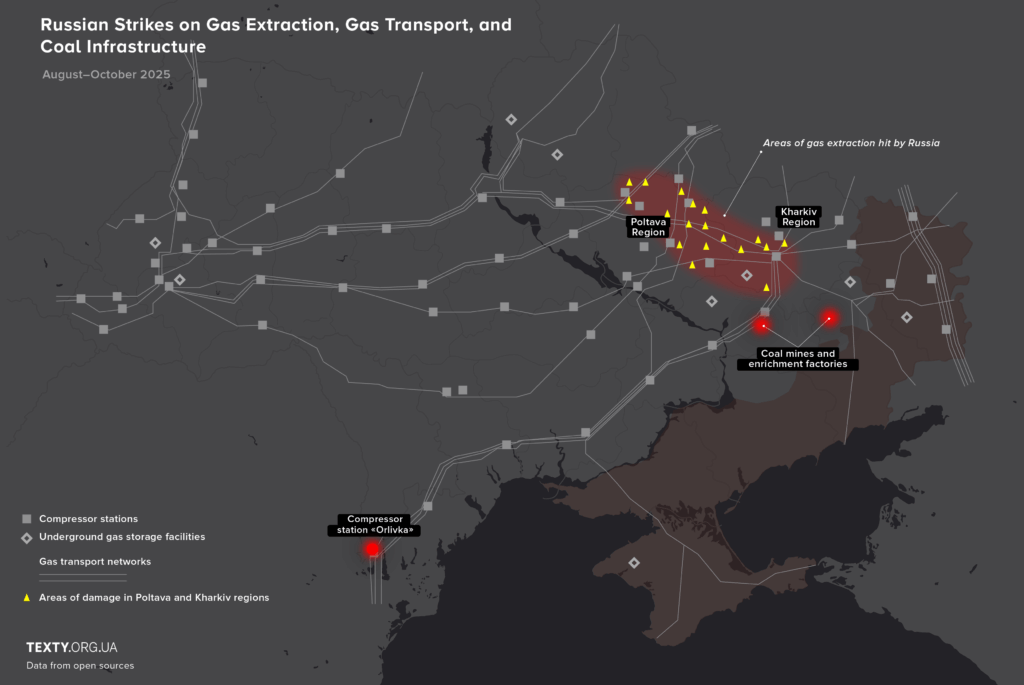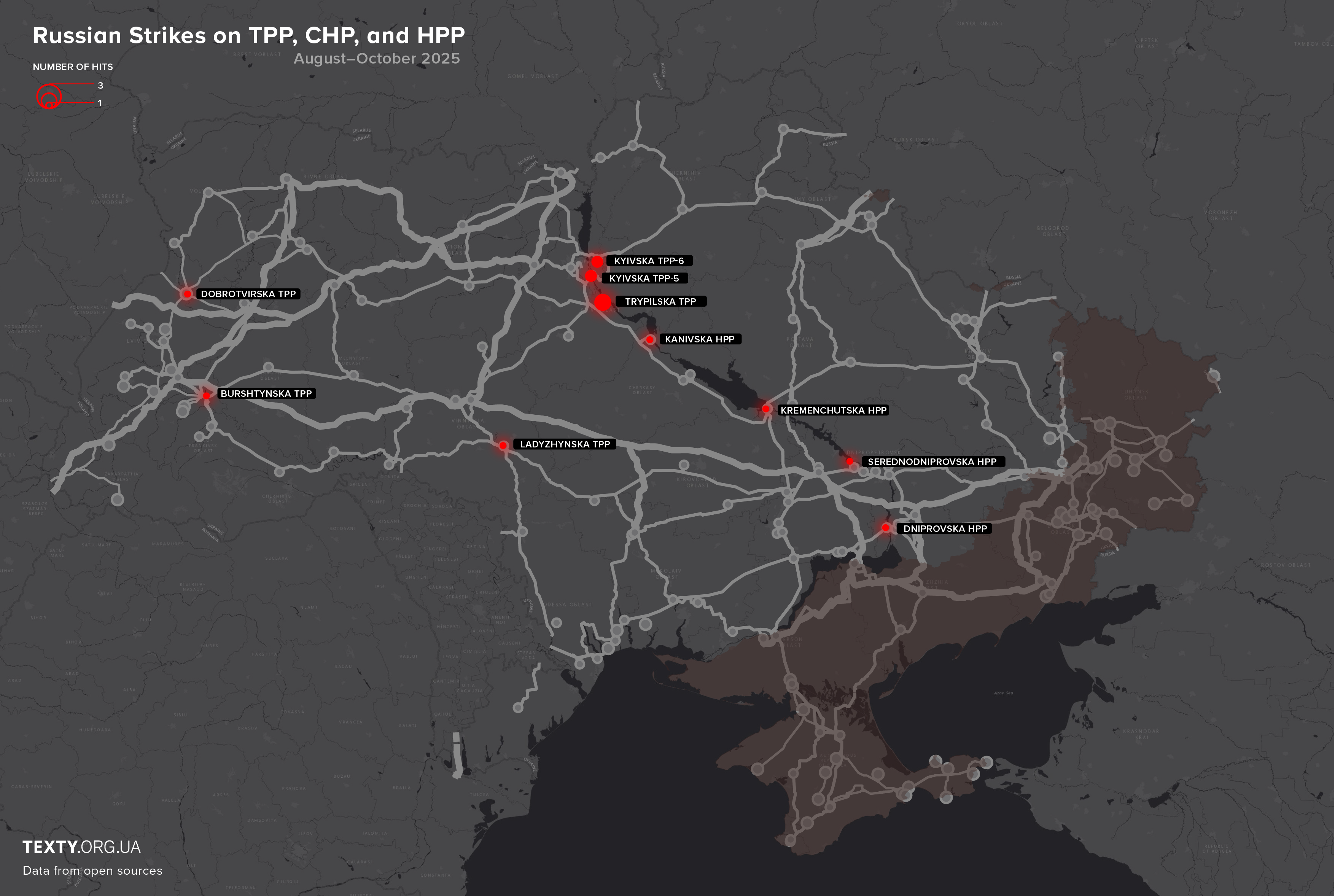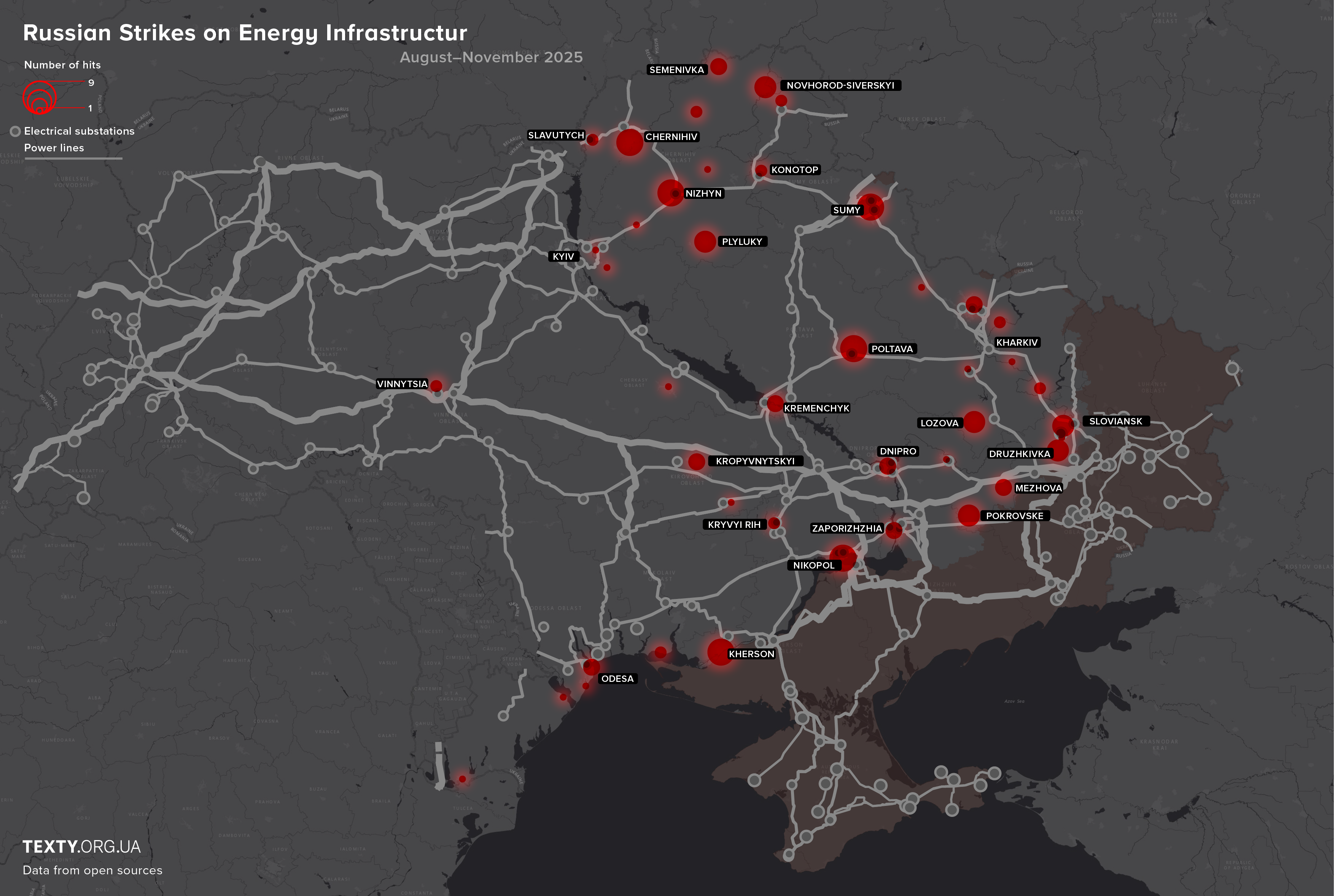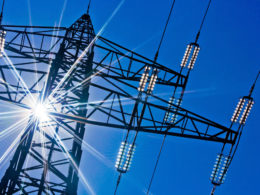Ukraine’s energy system is under sustained, precise attack, with Russian forces systematically targeting substations, power plants, and gas and coal facilities, according to a new analysis by Texty.org.ua. The research maps attacks over the past three months, highlighting a deliberate effort to disrupt the country’s energy production and distribution networks.
Russia has increased strikes on Ukraine’s energy infrastructure in recent months as winter approaches. By targeting critical points, Russia aims to create prolonged power outages, strain supply systems, and cause disruptions and chaos for both civilians and industry.
Strategic nodes targeted across border and frontline regions
Texty’s data shows that Russia’s campaign is no longer limited to opportunistic strikes. Instead, it is a strategic effort aimed at key nodes, including high-voltage substations in border and frontline regions, hydroelectric and thermal power plants, and maneuverable generation units that balance supply across the grid.
Repeated attacks on cities such as Chernihiv, Sumy, and Nizhyn reveal an emphasis on isolating urban centers and destabilizing local electricity networks.
Drones hit substations, missiles destroy power plants
The report also documents a clear shift in tactics. Shahed drones are now used to hit smaller but critical substations, while ballistic missiles, including updated Iskander models, strike larger targets with increased accuracy.
Cruise missiles remain in use but appear secondary to these new methods. Texty emphasizes that these attacks are planned, coordinated, and targeted - reflecting a systematic rather than random approach.

Coal fields and heating infrastructure hit ahead of winter
Coal and gas infrastructure has been similarly affected. Strategic mines such as Pavlohradvuhillya and gas fields in Poltava and Kharkiv regions have suffered repeated strikes, while critical facilities like the Orlivka compressor station were also hit, aiming to limit Ukraine’s ability to compensate for domestic production losses through imports.
Hydroelectric and thermal power plants have faced repeated attacks this autumn. Strikes on the Dnipro cascade, Trypilska TPP, and Zmiivska TPP demonstrate a deliberate focus on facilities that provide maneuverable generation and grid balancing - essential for coping with daily peaks in electricity demand.
The attacks on these nodes are strategically timed ahead of the heating season, compounding the potential disruption.

Restored capacity remains at risk as attacks evolve
The research underscores that the campaign is ongoing and evolving. Ukrainian authorities continue to restore and manage supply, but attacks will likely persist, targeting key infrastructure and limiting the country’s energy maneuverability.
So far, Ukraine’s energy system has managed to stay partially functional despite repeated strikes. However, with winter still ahead, the most serious disruptions may still be coming.





